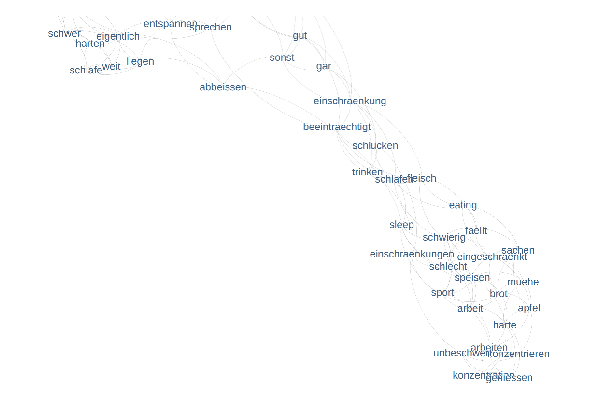WISE-Project
Researchers Involved
research areas
timeframe
2020 - present
contact
dominik.ettlin@zzm.uzh.chProject description
The WISE-project applies novel methodology of linking unstructured data with structured that with the aim to provide novel insights into the complex problem of persistent orofacial pain and temporomandibular disorders that would not be possible with traditional clinical trials.
“Real-world” patient experiences and data are increasingly recognized as the gold standard for evidence. The more traditional approaches such as randomized controlled clinical trials often preclude specific patient populations or treatment strategies, thus impacting their safety and efficacy. For a wider and more comprehensive data collection, unstructured data provide a rich source of information that can nowadays be assessed by computer linguistic methods. This rapidly evolving field can add depth to analysis as well as provide additional insights, particularly when combined with standardized measurements in the form of validated questionnaires or calibrated instruments. Furthermore, the inclusion of unstructured data can lead to knowledge enrichment regarding risk factors or health-relevant behaviors. Unstructured data is information that is not readily available in tabular formats (such as text data and images). Characteristically, such data require complex pre-processing and feature extraction to derive meaningful gain of knowledge.
Some years ago, our group had designed, constructed, and technically implemented a web-based interdisciplinary symptom evaluation (WISE) that relies on self-reported information by means of free text, graphical body maps, a symptom burden checklist and in-depth validated questionnaires. A case summary assists clinicians in clarifying case complexity and need for targeted expert evaluation, thus supporting clinical decision making in a biopsychosocial framework.
Hence, the patient’s real-world experience reflected in the WISE data offers the opportunity for linking unstructured data (free text; graphical maps) with structured data (validated questionnaires). The pre-processing of free text information and other feature extractions of the unstructured data requires the combined expertise and efforts of both, clinicians and computer linguistic specialists. Such an interdisciplinary approach will likely provide novel insights into the complex problem of persistent orofacial pain and temporomandibular disorders that would not be possible with traditional clinical trials.



